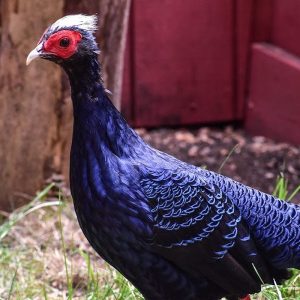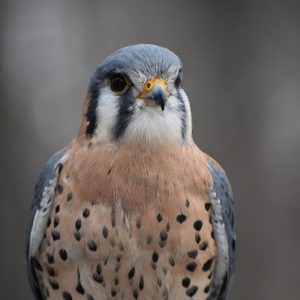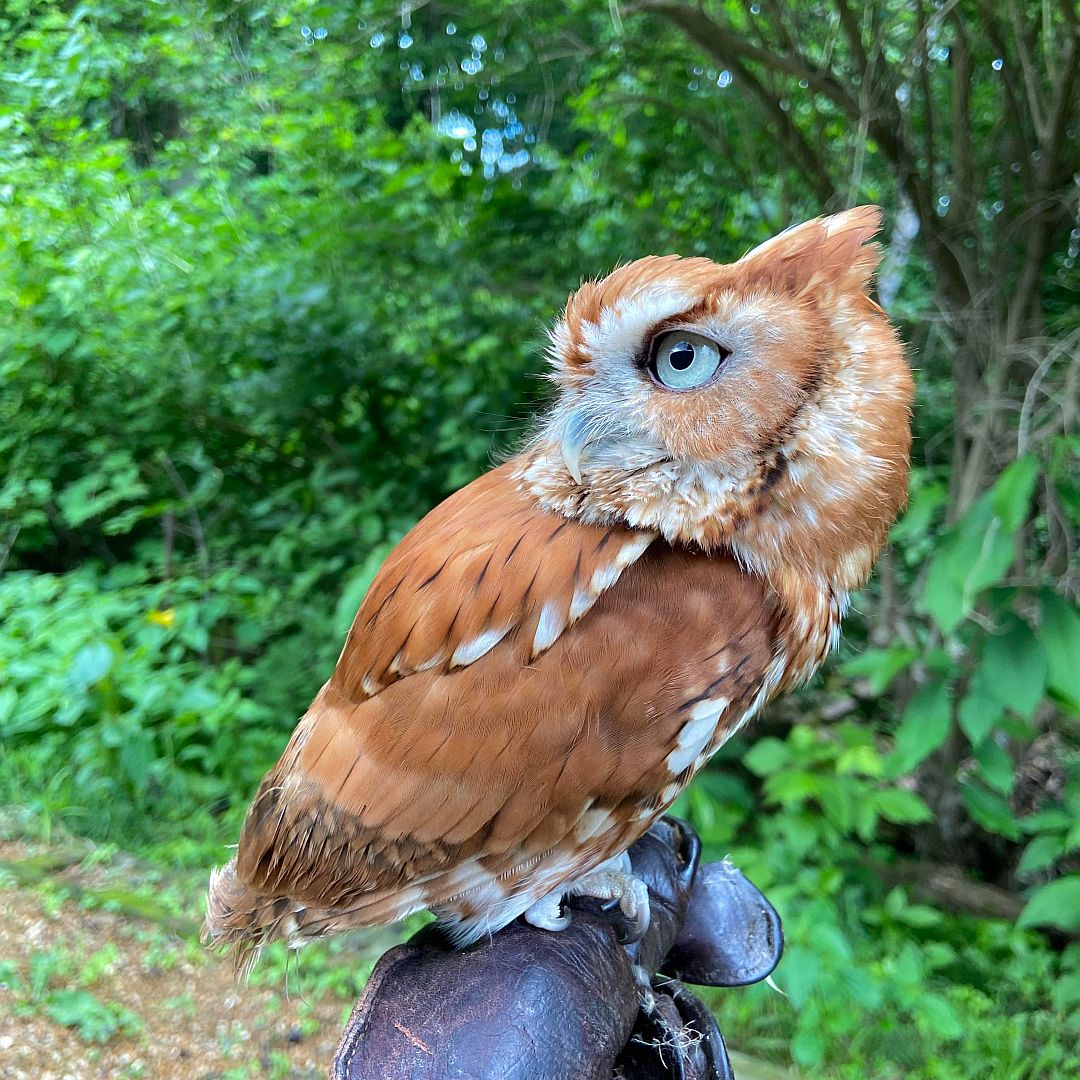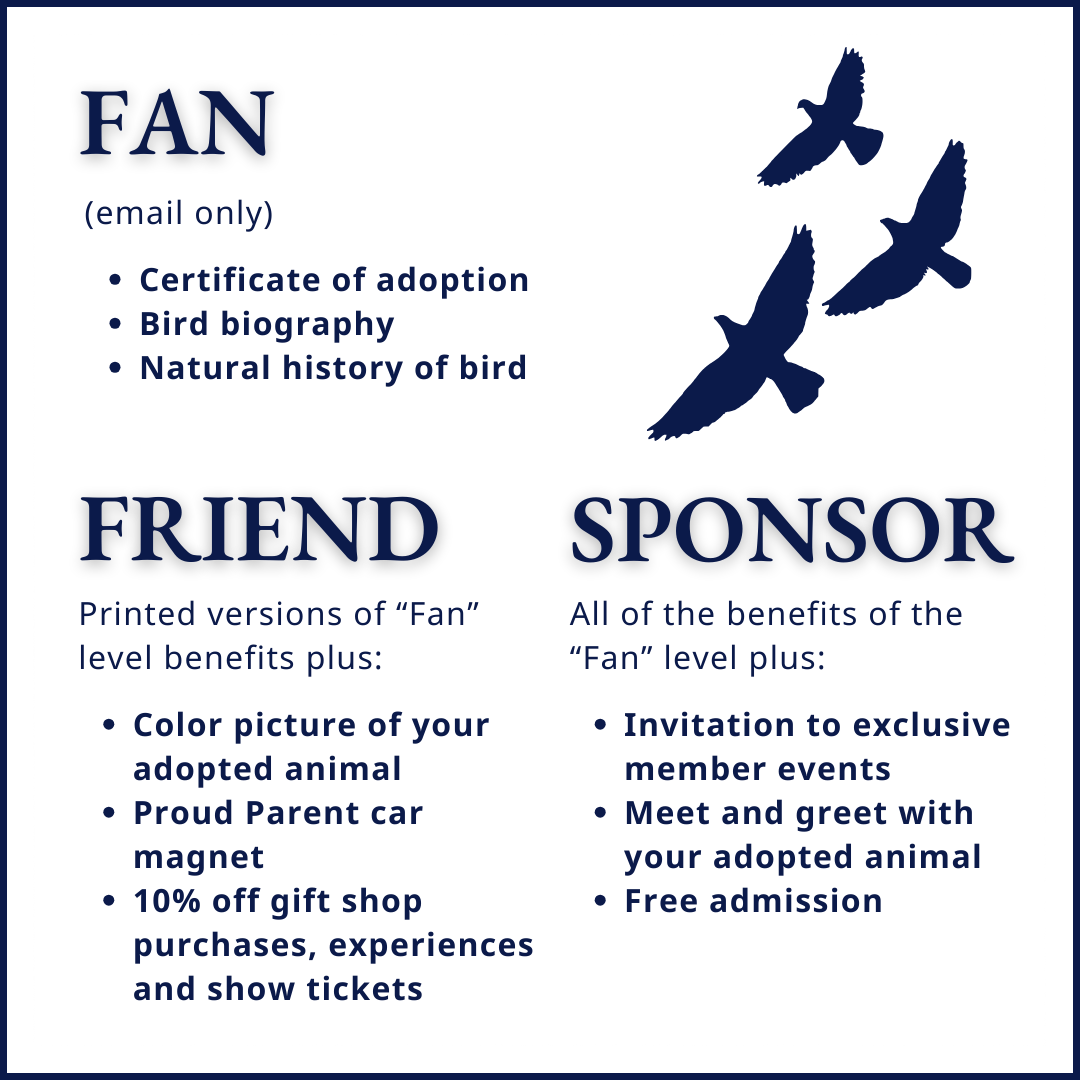Eastern Screech Owl – Bruno
Bruno was discovered as a nestling by a member of the public, and was kept and hand fed human food for nine days before finally being brought to the Kathryn G. Favre Rehabilitation Hospital at WBS. Considering the first thing he saw upon opening his eyes to the world were human caretakers, it’s no surprise that Bruno immediately became imprinted and would never be able to survive on his own in the wild. Upon admission to our hospital he was found to have zero fear of humans, and his favorite place to sleep was on the shoulder of the
nearest person even if he had to climb them to get there! Bruno became a permanent resident at WBS and was quickly trained to sit the glove as well as fly between gloves and perches.
$29.00 – $129.00
Description
HATCH YEAR: 2021
FUN FACTS ABOUT BRUNO
- A quick learner, Bruno is building up his confidence to fly in front of audiences and learning to be brave in the face of scary things such as moving wheels.
- When not educating the public, Bruno enjoys taking enthusiastic baths, calling to his trainers, and attacking paper and sisal rope balls.
SPECIES FACTS
Scientific Name:
- Otus asio. Latin and Greek meaning “a kind of horned or eared owl.”
Distribution:
- United States east past the Rocky Mountains and into northeastern Mexico.
Habitat:
- Heavily wooded areas, wood lots, and wooded stretches of residential areas.
- Will nest tree cavities, or nest boxes when available.
Diet:
- Mainly insects, small mammals, birds, crayfish, and earthworms.
Behavior:
- Nocturnal hunters.
- Screech owls are hunted by other birds of prey, like hawks and larger owls, so they are cryptically camouflaged to blend in with the trees in their habitat. This adaptation also makes it difficult for birders to find them. For this reason, they are usually identified by their sound.
- This owl is tiny, but mighty. They have been known to dive at dogs, cats, and humans when defending their young.
Identification:
- Eastern screech owls can be found in two different color phases. Grey or reddish-brown.
- Small in size, approximately 7-10 inches long.
- Feather tufts, called plumicorns, on top of head.
- Yellow eyes.
- Call is a high pitched hoot, but will also make a trilling sound that sounds very similar to a horse whinnying.
Additional information
| Adoption Level | Fan, Friend, Sponsor |
|---|
Related products
-

Edward’s Pheasants – Ringo & Tammy
$29.00 – $129.00 Select options This product has multiple variants. The options may be chosen on the product page -

American Kestrel – Ace
$29.00 – $129.00 Select options This product has multiple variants. The options may be chosen on the product page




